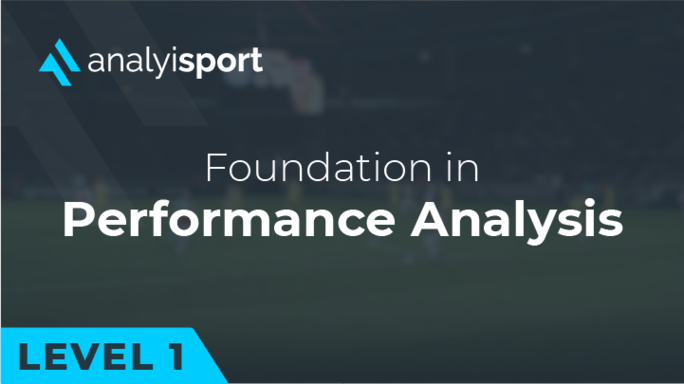How Is Recruitment Analysis Being Used In The MLS
How Is Recruitment Analysis Being Used In The MLS
Getting player recruitment right is crucial for a football club. Not only can a bad signing have a negative impact on the team’s performances, the financial cost of transfer fees and player wages can severely limit future spending. Clubs need to be as sure as they can be that they’re making the right decision.
This is especially important in the MLS, where clubs operate under rules that are different to a lot of competitions around the world. There are limits on the numbers of international players in the league, a draft system that more closely resembles other American sports than it does transfer systems used elsewhere, and a Salary Budget.
Each club is allowed three Designated Players who fall outside the constraints of the Salary Budget, meaning that clubs have a limit on how many big money signings they can make. This adds to the pressure to recruit the right player, as a bad signing is also taking up a valuable place in the team’s roster of players.
To improve their recruitment, MLS clubs are turning to analysis. By looking at performance data and searching databases of video footage, they can more accurately and precisely assess how well a player has been performing and whether they’d be a good fit. It also allows them to look at a far larger range of players.
Using Analysis to Find Players Abroad
One of the main advantages of using recruitment analysis is that it allows clubs to search more broadly for players.
No club has enough scouts to cover every country, and each scout can only attend a limited number of matches. In contrast, without leaving their office, analysts can search through data and video footage from all over the world.
It hasn’t replaced traditional scouting, but it makes the process much more efficient. Analysts can identify the players worth looking at and the scouts can focus their attention on them.
“In data and analytics, we’re trying to make the work of others easier,” FC Cincinnati’s former Director of Soccer Analytics, Alexander Schram, told MLSsoccer.com. “We can narrow it down to three players per position that they should be looking at, or maybe one. They don’t have to waste time looking at players who are not interesting to us.”
The amount of data and video available has increased in recent years and is provided to clubs by companies such as WyScout and Opta. More data allows analysts to build up a more
complete picture of a player. They’ll look back over their past performances, going back 18 months for example, to get a sense of how the player is developing and how consistent they are.
How MLS Clubs Use Technical Scouting
To help them identify whether a potential signing would be a good fit for the team, analysts create player profiles. They take the skills that a player needs to perform well in a certain position within the team’s tactics and find the statistics and metrics which quantify these skills. For example, if the club needs a central defender who is good at cutting out through balls, they’d look at stats such as the number of interceptions per game.
At Philadelphia Union, Director of Analysis Dean Costalas has created a metric called Philadelphia Union Value (PUV). It gives more weight to qualities that suit the club’s style of play, helping them search through the data to find players who would be able to quickly and smoothly adapt to life at the club.
Having their own metric, one that isn’t being used by other teams, allows them to spot players that other clubs might have overlooked. For this reason, the exact formula that clubs use in their own metrics are always kept secret. They don’t want to lose the competitive advantage it gives them.
Philadelphia Union spends less on players than many other MLS sides. In 2022, there are 18 MLS teams with higher wage budgets, but have been one of the top performances in the Eastern Conference. By using technical scouting, their smart recruitment policy has helped them to punch above their weight.
Building a Team from Scratch
In most countries, the top football clubs have been around for decades and are well established. Any new club tends to start at the bottom of the pyramid at a level where they are unlikely to be able to afford a recruitment analyst.
The expansion of the MLS in recent seasons, with the introduction of new teams into the league, has created the rare opportunity for analysts to help build a roster of players from scratch.
One such club is Atlanta United, who were founded in 2014 and entered the MLS in 2017. Recruitment analyst Lucy Rushton joined the franchise in 2016 to help build the roster in preparation for joining the league. She’d previously worked as an analyst at Watford and Reading in England.
“The most challenging aspect is finding the first few pieces of the jigsaw puzzle, because any one signing can ultimately affect the players you can sign in the future,” Ruston told ESPN’s Five Aside blog.
To improve recruitment at this early stage, Atlanta United decided to create a club culture that would persist over the years as managers came and went. “It’s a collaborative process which includes many personnel: the club president, the technical director, the manager,” explained Rushton. “Having established these criteria, I am then able to tailor my analysis to meet both the needs of the club and the manager.”
This process led to spectacular results. In just their second season, Atlanta United beat Portland Timbers in the final to become MLS champions. Rushton’s successful recruitment led to her becoming General Manager at D.C. United.
The Future of Recruitment Analysis in the MLS
Data analysis is helping clubs to make smarter decisions. But there are many factors that determine whether a transfer will be a success. Signing a player still isn’t an exact science.
To improve the quality of their recruitment analysis, clubs are learning to look at how different statistics relate to each other. Whereas in the past, analysts would look at each stat and how well players performed, there’s now more interest in how these stats are related. As football is a fluid sport, in which each action has an impact on the next action, this helps to give a more accurate picture of a player’s quality.
Another change is a greater emphasis on predicting future performance. At first, clubs used data to see how well a player has previously performed, now data companies and analysts are developing metrics and using AI modelling to try to predict how a player will develop and how well they’ll play in the future. This is particularly important for recruiting younger players who may not have played much first-team football.
Because of the importance of getting transfers right, recruitment analysis will continue to grow in the MLS.
Related Courses:

- Level 1
- Course
Level 1: Foundation in Recruitment Analysis in Football
£70.00
Share this article
Our Learning Pathways
AnalyiSport is for everyone who is passionate about analysis in football. Where are you in your development journey?
Become a Football Scout
As more clubs than ever look to build data into their recruitment process, an understanding of recruitment analysis is your ticket to success in the game.
Related Articles
Our team provides news and insights from the cutting edge of football analysis.






